As students of strength, it’s safe to say we’re all chasing some performance-related goal. Whether that’s becoming a StrongFirst Certified Instructor, hitting your one-arm one-leg push-up, or pulling two or three times your bodyweight, having something to reach for is necessary for success and progress.
But what actions are you taking every day to get closer to achieving your goal? And have you examined why are you even striving for that goal in the first place?
Today I want to examine the goal-setting process and challenge you to compare performance-based goals and mastery-based goals. My hope is that once you’ve read this article, you’ll have another tool you can use to help you gain strength.
Are You Setting the Right Goal?
There are three different spectrums on which goals typically fall:
- Outcome vs. Behavior: An outcome goal focuses, unsurprisingly, on what the outcome will be. “I want to get stronger.” Whereas a behavior goal is something you will do, an action you will take, to get you closer to that goal. “I’m going to train every Monday, Wednesday, and Friday.”
- Avoid vs. Approach: Avoid-type goals focus on “stopping” something, they push you away from something, as in, “I want to stop wasting so much time at the gym.” Avoid-type goals often have the downside of pushing you away from your goal. While approach-type goals pull you toward achieving your goal, i.e. “I am going to set a time limit on my training sessions to make sure I’m using that time as productively as possible.”
- Performance vs. Mastery: The difference between performance goals and mastery goals is the difference between the goal of wanting to “win” or “be the best” and the goal of learning the skills and strategies needed to succeed. The former is a performance goal, while the latter is about mastery.
So let’s go back to one of the questions I posed to you. With these three spectrums in mind—and with particular focus on the last category, as I believe that one to be most relevant to us strength professionals—why are you chasing the goal you’re currently chasing?
Are you looking to “win,” get recognition, or “be the best”? Or are you looking for growth, learning, and mastery? In our world, it’s easy to focus on performance aspect (sets, reps, loads, percentages, etc.) and forget about the process and what can be learned along the way.
I asked myself this same question with regards to an ongoing goal I have of achieving “Sinister” status. When I decided to chase “Sinister,” I had just finished my SFG Level I Cert. The program was demanding and required my undivided attention. The weekend of the Cert was memorable—one I’ll never forget. But with all achievements, it’s normal to feel a bit down after the big event. So I found myself questioning why I was choosing this particular new goal.
To find the answer, I took a hard look at my identity and values, and I asked myself what I was seeking in chasing “Sinister.” Was I looking to “win” something, get recognition, or “be the best”? No, I was looking for a program to follow—something to give purpose to my training. Preparing for the SFG Level I had given me purpose, and I once again found myself seeking a higher-level reason to push myself in my training.
In thinking back, I realized I love the process more than the finish line itself. Though I was proud of my SFG Level I Certification, I missed the journey of getting there. This can explain why I like setting goals that take practice, persistence, and patience. In the process of achieving performance, you often become a master of practice.
The Path to Mastery
As with most things in the world of strength, the setup is just as, if not more important as the “lift” itself. In this case consider your “lift” to be your goal and your “setup” to be your goal-setting process.
Start by viewing your goal with a slightly different perspective. Do you want to deadlift 500 pounds? Why? Is it because you want to win your meet or because you enjoy the process?
Wanting to “win the meet” and training with that mindset throughout your program could lead you astray at times of adversity and during the inevitable setbacks. When times get tough, you want to have something to fall back on that guides you, rather than pushes you in an aimless direction.
You may have days where you don’t “perform” in a way that matches the target numbers you’ve laid out in your program. If all you have are those daily performances, this can be devastating to your motivation (and ego). But if you show up daily to master the movement, to master your practice, and to be a master of strength—then as long as you rise to the occasion, you have “won” the day.
If you are a student of a trainer, instead of setting a goal of “to win the meet,” what if your goal was shifted to something like, “Receive and write down one actionable piece of feedback from my instructor on each of my big three lifts after each training session.” If you are training alone, make sure you create a strategy to observe yourself and create that feedback for yourself.
These bits of feedback must be actionable—because a great goal demands action. Chances are high that if you give yourself feedback on your squat, deadlift, and bench press after every session, you’ll find yourself making small improvements, seeking advice from seasoned vets, and getting better in the process.
When I took on this mindset, my original goal of “achieve Sinister status” first shifted to “master the swing and the get-up.” But I realized that goal was vague, and therefore inherently hard to act on and measure against. To demand action from yourself, aim to make your goal as concrete as possible.
For me, that changed my daily goal to this:
“Write down one new thing I learned or observed about the swing or the get-up after every training session.”
Sounds much more actionable and attainable, right? It is important for your goal to be attainable. Do you confidently think you can perform your chosen action after every training session? If the answer is 110% “yes,” then fantastic—time to get to work. If you’re only 99% sure, then go back to the drawing board.
So what about the goal I chose—did I confidently think I could achieve making and recording these observations about my training? Absolutely! It was almost too easy, which is exactly what you want. You want each step of your journey to feel too easy. You want to guarantee success early and often to create momentum and propel you forward.
Note: This smallest level of your goal may change more often than your “big picture” goal. Notice I said it should be “almost” too easy. If your daily goal evolves into a regular habit, then you may need to create a new action for yourself. Reevaluate every couple weeks and see how the plan is working. Did you get closer to your goal? Has your current practice become a habit? If so, adjust, take a small step forward, and continue the process again.
How the Pursuit Leads to Performance
Master SFG Fabio Zonin posted an article about his experience preparing for a bodybuilding competition via “unconventional” methods. He didn’t do a single biceps curl or triceps push-down. He didn’t push to failure or chase the “burn” so often sought with other methods of training.
Instead he focused purely on the big movers and stuck to StrongFirst principles. This line in his article resonated with me:
“At StrongFirst, we see body composition and physical appearance as pleasant side effects of what we do, rather than the primary goal.”
I thought about how matter of fact that statement is and related it to the concept of performance versus mastery goals. Shifting my focus from “attaining Sinister status” to “mastering the swing and the getup” and then to “write down one new thing I learned or observed about the swing or the get-up after every training session” has naturally led to greater performance in my training sessions—almost as a pleasant side effect.
When you detach yourself from the result and devote yourself to the process, a lot of good things tend to happen. If you’re stressing over “winning a meet” or achieving a specific performance, your technique might suffer and your focus might cloud. If you ignore the end result and instead focus on mastering your practice (driving your feet through the floor, sniffing for air, enjoy the float, etc.), you’re likely to still arrive at your desired result—only even stronger and smarter.
I’m not saying you can’t strive to “win” ever again, but I am saying you stand a better chance at success if you focus on mastery rather than performance alone.
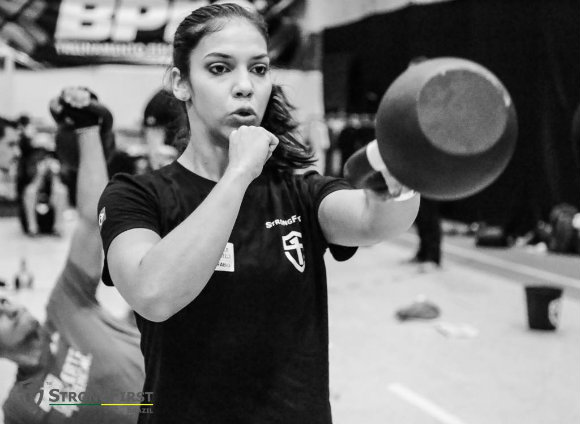
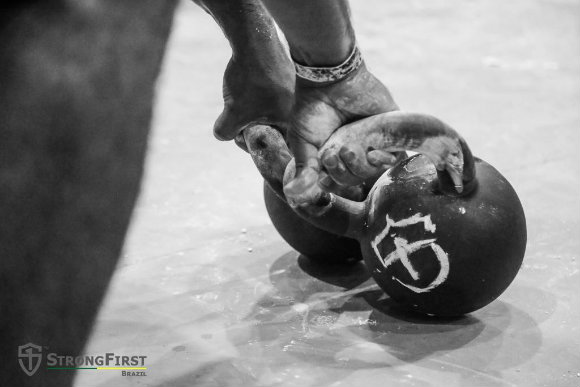
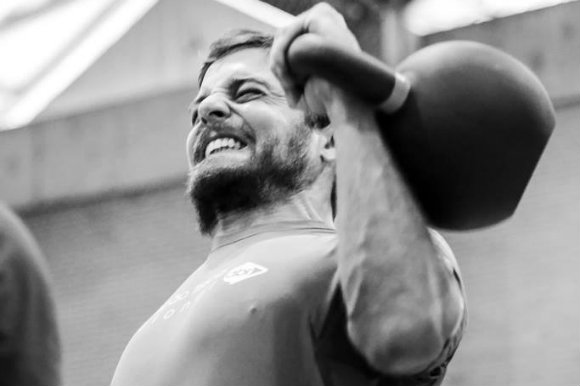
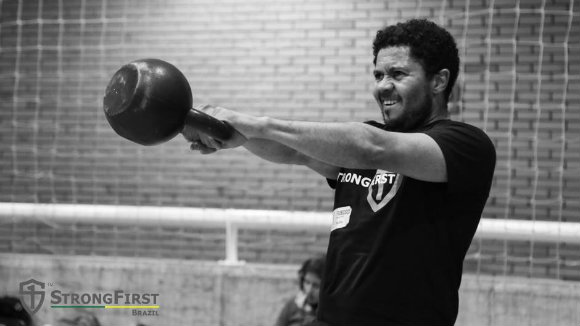
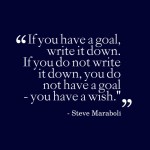
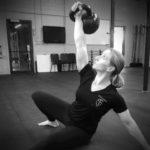
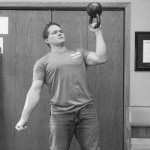
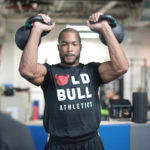



Again, this article is full of profound wisdom and catchy examples. I hope you share more insight with the community!
A really nice article, brought me to a sort of reexamination of my training process. Being my own trainer and not a pro in the fitness industry, I spend the start of 2017 thinking about my goals I’ve reached last year. Doublepressing 2×32 KBs, following the protocol of Jeoff Newpert with 30 min. under load. 15 bodyweight tactical pull ups (I did them just as a kind of inlays, never more than 5 reps between the other sets of pressing or squatting, but up to 250 a week).
Increasing of my single KB press of a 32 kg KB from 1TRM with left and right hand to 4/6 following the soja&tuba protocol with 28 kg KB. An after all that came the article by Pavel Macek and S&S…
After a bug change in job I was looking for something just to follow. I’ve practiced S&S already since I’ve had bought the book. But still I didn’t get to the Simple Goal. So I startet this year with a new goal.
Now, after I read your article, the way will be clearer.
Regards
Sergej
Thanks for your comments Sergej and good luck on your Simple and Sinister Journey. Sounds like you’ve got the skills needed to succeed!
Thanks Chris, always good to review and clarify these principles.
Thank you, Nathan!
Love it. I’m going to adopt a similar goal of faithfully recording following up on one area to work on for both swing and getup, every session. Great reminder that the goal is mastery of the skill of strength – the application of that mastery is different for all of us (attaining SFG cert, being ready for a sport-specific season or meet, or GPP/fat-loss), but the process should be the same. Bravo!
You’ve got it Sean, glad you enjoyed it! Thank you
Love it! Nice article!
Thanks Rob!
In short, focus on mastery and the performance will follow. Thank you for this
That’s the gist. Thank you Rich!
Hey Chris,
Awesome article! I’ve been on this bodyweight program focused around pistols, pull-ups, and HSPUs, and I’m acutely aware (now) that my focus has been just getting the work done instead of owning the movements. I’ll definitely take your advice to heart and see how that helps me progress. Thanks for the great insight!
Awesome Brian! Thanks for the feedback. It’s quite the “ah-ha” isn’t it? Good luck brother!